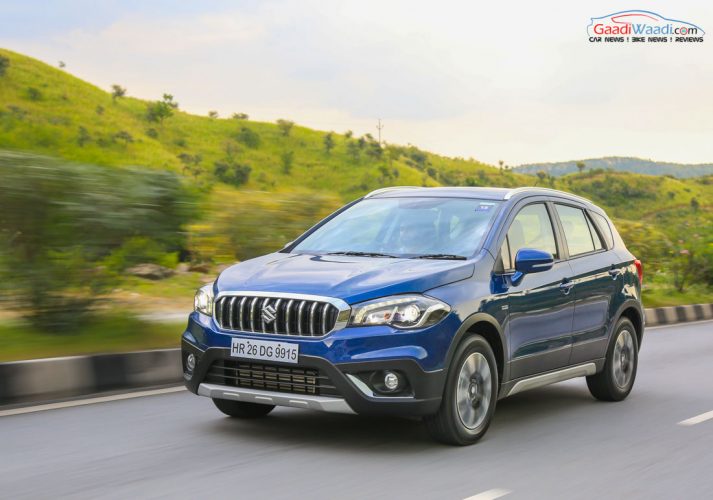
Thanks to a fast reducing gap in the prices of petrol and diesel and the increase in the efficiency of petrol engines, there has been a gradual shift towards petrol-powered cars. A quick look at the sales distribution data shows 30% of Hyundai Creta, 40% of Honda WR-V, 58% of Honda BR-V, and 30% of Ford EcoSport are petrol powered. Taking this into account, the petrol version of the S-Cross, if launched, could increase its sales by upto 40%.
Launched in 2015, the Maruti S-Cross was initially available in two diesel variants – 1.3-litre and 1.6-litre. The facelift, however, was launched with the smaller diesel engine only. This was done owing to the low demand for the much more powerful 1.6-litre motor. Also, the introduction of the facelift saw the S-Cross getting the much-publicized SHVS mild hybrid technology.
However, the Maruti S-Cross continues to lack a petrol engine option. Going by the fast increasing demand for petrol-powered cars, Maruti is expected to launch the petrol variant in the coming months. This should help the manufacturer capture the car buyers whose monthly running doesn’t warrant buying a diesel car. Also, many car buyers prefer the refinement of a petrol engine over the higher torque offered by a comparable diesel motor.
Hence, Maruti Suzuki India Ltd might soon want to launch the S-Cross with the 1.5-litre K15B four-cylinder naturally aspirated engine that made its debut on the MarutiCiaz facelift. This is the same engine that will also power the upcoming MarutiErtiga MPV. In the company’s range of motors, the 1.5-litre engine replaces the 1.4-litre K14 powerplant of the pre-facelift Ciaz and current Ertiga.
The 1.5-litre K15B engine produces a maximum power of 104 PS along with a peak torque of 138 Nm. This is significantly more than the 94 PS and 130 Nm produced by the outgoing 1.4-litre unit. Also, this engine gets the second-generation of SHVS mild-hybrid technology, which means a high fuel efficiency is a given.
The company didn’t launch a petrol variant of the Maruti S-Cross back in 2015 owing to the low demand for petrol-powered models. Now, with the rising popularity of petrol engines, it makes complete sense to come up with a petrol engine variant.
This website uses cookies.